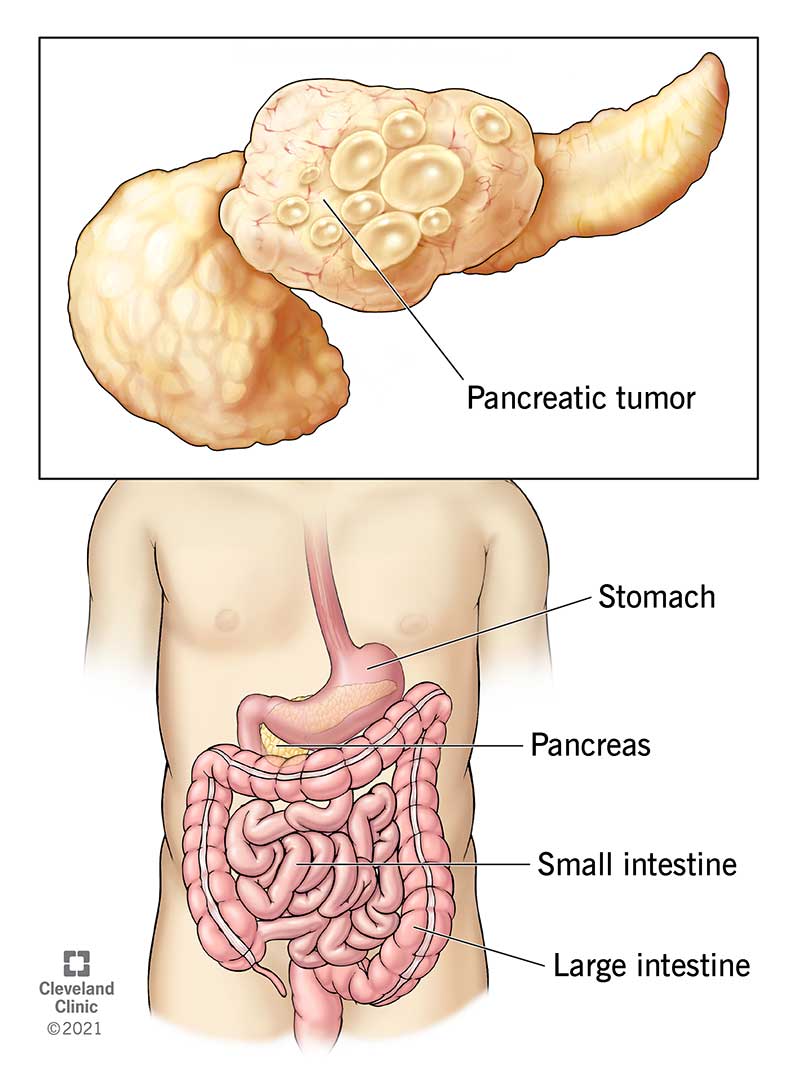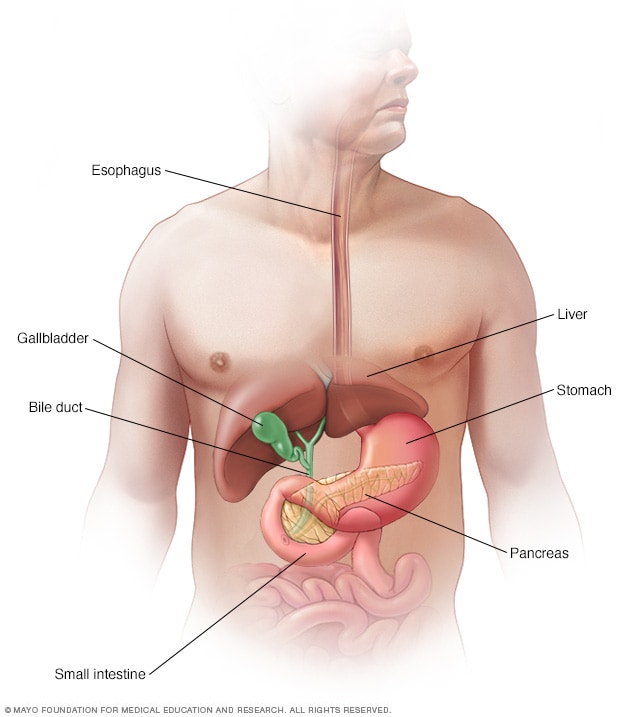Identifying Symptoms of Pancreatic Cancer
"When pancreatic cancer is diagnosed earlier, patients have a higher chance of survival.""Ir is possible to diagnose patients when they visit their GP [general practitioner], but both patients and GPs need to be aware of the symptoms associated with pancreatic cancer.""These new findings enable us to conduct further work on understanding symptoms that could suggest pancreatic cancer.""This will help GPs to make decisions about who to refer for urgent tests, especially when patients have several seemingly non-spoecific symptoms."Weiqi Liao, data scientist, University of Oxford, United Kingdom
| The pancreas is in the digestive system |
Two previously unrecognized symptoms of pancreatic cancer have been isolated and identified by researchers as part of their efforts to improve early detection of the presence of the deadly disease. A feeling of thirst and emitting dark urine now join the list of symptoms enabling medical practitioners to identify the early warning presence of pancreatic cancer. This is research that also corroborated 21 other known disease symptoms, some appearing a year prior to diagnosis.
Pancreatic cancer is a disease that presents identification difficulties since many of its symptoms are not found in the cancer's early stages, arriving only when tumours begin to effect the host body. Depending on the precise location of the tumours, signs of the aggressive cancer can vary, once again making the process a frustrating exercise in diagnosis. The research aimed to gain an improved understanding of the symptoms, leading Dr.Liao and colleagues to consult health data of 24,236 patients diagnosed with pancreatic cancer in Britain from 2000 to 2017.
The researchers compared the symptoms appearing over the years to the symptoms of patients not diagnosed with the disease. Two symptoms that stood out as most commonly identified associated with a pancreatic ductal adenocarcinoma diagnosis (PDAC) -- which is the most common type of pancreatic cancer -- were jaundice and bleeding in the stomach or intestines. A rarer form of pancreatic cancer known as pancreatic neuroendocrine neoplasms (PNEN) was also identified with jaundice and bleeding.
The full list of symptoms associated with PDAC and confirmed by the researchers were:
- Yellowing of the skin
- Bleeding in the stomach or intestine
- Problems swallowing
- Diarrhea
- Change in bowel habits
- Vomiting
- Indigestion
- Abdominal mass
- Abdominal pain
- Weight loss
- Constipation
- Fat in stool
- Abdominal swelling'
- Nausea
- Flatulence
- Heartburn
- Fever
- Tiredness
- Appetite loss
- Itching and back pain
Of these symptoms; yellowing of the skin, blood in stool, diarrhea, changes in bowel habits, vomiting, indigestion, abdominal mass, abdominal pain and weight loss, were associated with PNEN. Not necessarily specific to pancreatic cancer, many of these symptoms found in diagnosed patients held an increased likelihood of experiencing some of them up to a year prior to diagnosis, thus giving hope for enhanced early detection efforts.

"Being aware of the early symptoms of pancreatic cancer is crucial if we are to diagnose patients earlier and improve pancreatic cancer survival.""This research could help GPs and their patients know more about the signs of pancreatic cancer. It's vital that people speak to their GP if they notice these symptoms.""Future research could help us develop tools for GPs to help them make referrals, especially when patients present with several non-specific symptoms."Pippa Corrie, chair, pancreatic workstream of the NCRI Upper Gastrointestinal Group/ Consultant Medical Oncologist, Addenbrooke Hospital, Cambridge, U.K.
Labels: Pancreatic Cancer, Research, Symptoms, United Kingdom


0 Comments:
Post a Comment
<< Home